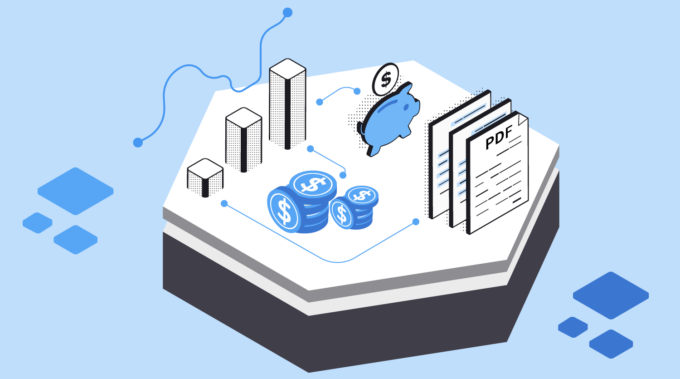Navigating the tumultuous waters of business finance can be daunting for any entrepreneur. At the heart of financial management lies the imperative to understand and maximize profit margins.
While a company might be generating high revenue, if it’s not making a profit, it’s only a matter of time before things come crashing down.
But what happens when a business faces continuous profit margin woes? Let’s delve into the common culprits behind these challenges and the accounting solutions that can alleviate these concerns.
Understanding Profit Margins

Before discussing the pitfalls and their solutions, it’s essential to understand what profit margin is. In its simplest form, profit margin illustrates what percentage of sales has turned into profits.
Typically, a higher profit margin indicates a more profitable company that has better control over its costs compared to its competitors.
Common Culprits of Profit Margin Woes
Inefficient Inventory Management
Holding too much stock can be a big drain on profits, as it ties up cash and leads to spoilage and wastage. Companies need to take the time to track their stock levels so that they can adjust according to market demand.
While online accountants can effectively streamline inventory management, manual processes can also be employed such as creating a spreadsheet to track stock levels.
Rising Cost of Goods (COGs)

A prime culprit of decreasing profit margins is the rising cost of goods (COGs). As the market shifts and prices increase, companies need to ensure that their COGs are in line with industry standards.
Increasing your prices can be a great way to mitigate rising COGs, however, companies should also consider other cost-saving measures to help assess expenses and identify ways to reduce costs.
High Operating Costs
One of the most common reasons for low-profit margins is exorbitant operating costs. These might encompass rent, wages, utilities, and other day-to-day business expenses. When these costs spiral without a corresponding increase in revenue, profit margins take a hit.
Incorrect Pricing
Setting up the correct price for each item is a fine art. But if your pricing strategy is off, it can lead to significant losses. Too high, and you might drive customers away; too low, and there might not be enough profit left after covering costs. Incorrect pricing strategies can quickly erode profit margins.
Unforeseen Expenses

Unexpected costs, such as emergency repairs or legal fees, can quickly erode projected profit margins. While these are often unavoidable, a lack of preparation can make their impact more pronounced. It becomes hard to accurately forecast profits without taking into account such expenses.
Inaccurate Forecasting
Inaccurate forecasting is a major player in eroding profit margins. Without taking into account external factors, such as shifts in market demand or changes in customer preferences, it can be hard to make accurate predictions about potential profits.
Accounting Solutions To Combat Margin Woes
Streamline Operations
Streamlining operations is one of the best ways to ensure that costs are reduced. Automation can help reduce the time needed for certain tasks, while outsourcing can allow businesses to access services more quickly and cheaply than they could in-house.
Data-driven Pricing Strategy

Modern accounting tools allow businesses to access up-to-date data about the market, customer preferences, and industry trends. This can help businesses to craft a data-driven pricing strategy that maximizes profits while remaining competitive.
Outsource Non-essential Tasks
Outsourcing non-essential tasks such as accounting or payroll can allow businesses to focus their efforts on the areas that are most important to their success. This can help save time and money while ensuring that tasks are handled by experienced professionals with a proven track record of success.
Tighter Inventory Control
For businesses with significant inventory, tighter inventory control can help keep costs low and provide more accurate projections of the cost of goods sold. By monitoring inventory levels and ensuring that stock is always replenished in a timely manner, businesses can avoid costly overstocks or shortages.
Enhance Customer Engagement

Engage your customers in a meaningful way and understand their needs better. This can help you to create products and services that meet those needs, boosting customer loyalty and improving your bottom line.
Just imagine a retail store that offers personalized promotions or product recommendations to customers. It not only helps to build customer loyalty but also helps drive sales and increase profits.
Strategic Pricing
Cost-plus pricing, competitor-based pricing, and value-based pricing are all common approaches to setting prices that can help businesses maximize their profits. Understanding the customers’ perceived value of a product or service is essential for setting the right price.
Tax optimization

Taxes are the lifeblood of any organization. Identifying and taking advantage of tax incentives available in your jurisdiction is essential for maximizing profits.
Companies should also ensure that they are up to date on all relevant laws and regulations, as failure to comply can result in stiff penalties that could easily wipe out the profit margins.
Embrace Technological Solutions
With advancements in artificial intelligence, automation, and machine learning, businesses can now embrace a range of technological solutions to improve their business operations. Investing in the right technology can help streamline processes, reduce costs, and improve efficiency, ultimately leading to higher profits.
Monitor expenses closely
It is vital to regularly monitor business expenses, as even small costs can add up and have a significant impact on profits. Businesses should strive to identify areas where savings can be made and then take the necessary steps to reduce those costs. This includes investing in energy-efficient equipment, using more cost-effective materials, or outsourcing certain tasks.
The Bigger Picture: Beyond Accounting
While accounting solutions play a pivotal role in addressing profit margin challenges, a holistic approach is always more effective. This involves ensuring that the entire organizational machinery, from operations to marketing, works in sync to optimize costs and maximize revenues. Learn how to measure gross profit margin.
Wrapping Up
Profit margin challenges, while common, aren’t insurmountable. With a clear understanding of the underlying issues and a proactive approach to financial management, businesses can chart a course toward fiscal health.
If you are a business owner, and you feel stumped by profit margin woes, consider the above strategies to help you get back on track. Good luck!









